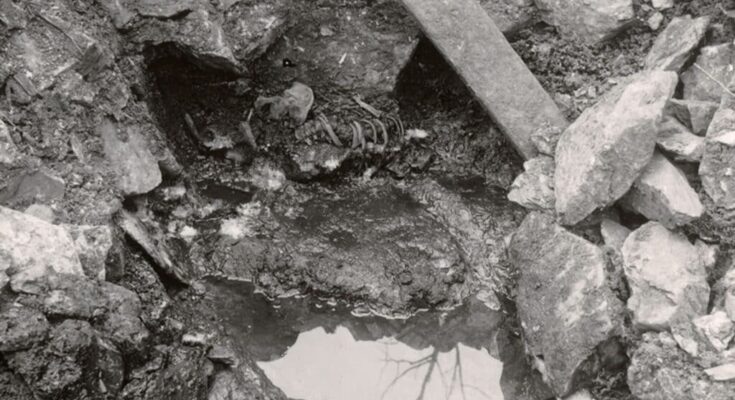
Researchers have confirmed a centuries-old story about a royal attempt to poison water with the help of DNA analysis of 800-year-old human bones from a medieval man’s skeleton found in Norway.
The skeleton was discovered in a well at a castle in Norway in 1938. A recent study, released on Friday in the journal iScience, used modern dating methods and DNA testing. The findings show that the person likely died in 1197 during an attack on the castle of King Sverre Sigurdsson near Trondheim in central Norway.
This historical event is mentioned in “Sverris Saga,” a story from the 12th to 14th centuries, which tells the tales of Norwegian and Icelandic kings.
Michael Martin, an evolutionary geneticist at the Norwegian University of Science and Technology, explained to Live Science that this could be the first time a person mentioned in Norse sagas has been identified.
He pointed out that while genetic testing helped confirm the remains of England’s King Richard III, who died in 1485, this case is much older. The remains in the well date back to 1197.
Biological warfare, as described in the Norse ‘Sverris saga,’ has been proven to be true.
The Sverris saga is one of the "Kings’ sagas", focusing on the life and reign of King Sverre Sigurdsson of Norway, who ruled from 1177 C.E. to 1202 C.E.
The saga details Sverre’s rise to… pic.twitter.com/MF3pnl7jQH
— Ancient Hypotheses (@AncientEpoch) October 26, 2024
“This is the earliest time that genomic approaches have been applied,” Martin said.
New DNA analysis has revealed that the man’s ancestors likely came from southern Norway. This challenges earlier beliefs by some researchers that he was one of the local defenders from central Norway.
The study suggests two possibilities. Either the defender had southern roots, or the attackers might have thrown one of their own dead into the well, the authors wrote.
King Sverre’s rise and the 1197 well poisoning plot
Archaeologists believe that the Sverris Saga was likely written during or soon after the events it describes, potentially with input from King Sverre himself, who reigned between 1177 and 1202.
The study outlines the content of this 182-verse saga, which details Sverre’s rise to power in Norway in the late 12th century. It recounts the battles fought by his soldiers, known as “Birkebeiner,” named after the birch-bark leggings they wore for protection. Sverre’s main opposition came from the “Baglers,” a rival faction.
According to the researchers, it was during a Bagler raid in 1197 that a corpse was thrown into a well outside Sverre’s castle near Trondheim, likely in an attempt to poison the water supply and weaken the defenders.
“They took a dead man and cast him into the well, and then filled it up with stones,” the translated saga reads.
While the bones found in the well may not belong to the man mentioned in the saga, radiocarbon dating places his death at the same time as the events described, the study notes.



